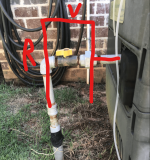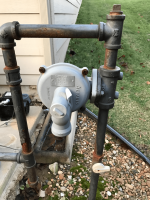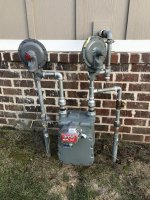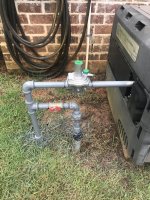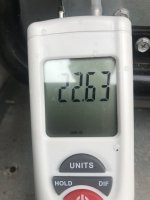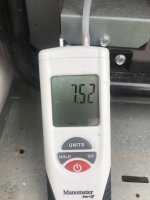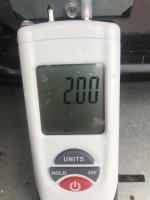Static pressure to heater gas valve is 22.63"
Running pressure to heater gas valve is 7.52'
The static is too high.
The output from the regulator should not exceed 10.5".
Low pressure is specified as 0.5 psi, or less.
0.5 psi is 13.85" w.c, which is the most I would put on the gas valve.


Also, the amount of drop seems excessive.
If we use a maximum input of 10.5" and a minimum of 4.5", the maximum drop should not exceed 6' w.c and the ideal drop would be closer to about 2" w.c to 2.5" w.c maximum.
I would ask the service tech to lower the pressure to 10" w.c and then recheck the drop.
If the drop is more than 2.5" w.c, then the line might have an issue or maybe the regulator is not rated for the btu/hr.
Have the service tech make sure that the regulator is rated for 400,000 btu/hr or 400 cubic feet per hour.
Sometimes water gets in the line or sometimes the line rusts out.
That's why I initially suggested replacing the line, but at only 3 years old, the line should be in good condition.
Pool is three years old - plumbing installed same time as pool.
At only three years old, the line should be fine, but it might still have an issue.
Maybe have it pressure tested and then blown out to make sure that the line is clear.


